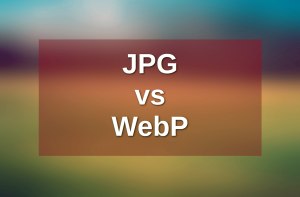Both WebP and AVIF are modern image formats designed to provide high compression efficiency while maintaining image quality. Here’s a comparison of their features, advantages, and support:
Table of Contents
WebP
Advantages:
- Compression: WebP supports both lossless and lossy compression. It generally offers better compression than JPEG for lossy images and PNG for lossless images.
- Animation: WebP supports animation, similar to GIFs but with better compression.
- Transparency: WebP supports transparency (alpha channel) in both lossy and lossless modes.
- Browser Support: WebP is widely supported by most major browsers, including Google Chrome, Firefox, Microsoft Edge, and Opera.
Disadvantages:
- Encoding/Decoding Speed: WebP can be slower to encode and decode compared to JPEG and PNG.
- Support in Other Applications: While support is growing, WebP is not as universally supported as JPEG or PNG in non-browser applications.
AVIF
Advantages:
- Compression: AVIF typically offers superior compression compared to WebP, JPEG, and PNG. This means smaller file sizes for the same or better quality.
- Image Quality: AVIF provides excellent image quality at lower bitrates, especially for images with high detail and color gradients.
- Features: AVIF supports HDR (High Dynamic Range), transparency, and animation.
- Future-Proof: As an image format based on the AV1 video codec, AVIF is designed for future high-efficiency media applications.
Disadvantages:
- Encoding/Decoding Speed: AVIF can be slower to encode and decode compared to WebP, which might affect performance.
- Browser Support: AVIF is supported by Chrome, Firefox, and Opera, but support in other browsers (like Safari) is more limited compared to WebP.
- Support in Other Applications: AVIF support is still growing, and it’s not as widespread as older formats like JPEG and PNG.
Browser and Application Support
WebP:
- Browsers: Google Chrome, Firefox, Microsoft Edge, Opera, and Safari (with iOS 14 and macOS Big Sur).
- Applications: Supported by a wide range of applications including some Adobe products, various image viewers, and more.
AVIF:
- Browsers: Google Chrome, Firefox, Opera.
- Applications: Support is growing, with some image viewers, editors, and services beginning to adopt AVIF.
Which is better?
- For general use, where browser and application support are critical, WebP might be a better choice due to its broader current support.
- For scenarios where the highest compression efficiency and image quality are paramount, and where you can ensure that the necessary software support is available, AVIF is a more advanced option.
Ultimately, the choice between WebP and AVIF will depend on your specific needs, including the target audience, required features, and the environment in which the images will be used.
What Is Edge Computing? A Beginner-Friendly Guide for 2025
In the ever-evolving world of technology, the term “edge computing” is gaining more atte…
How to increase traffic and engagement
In this article we give you some tips and trick on how to increase traffic to your website. 1. Optim…
Skype Is Over: Microsoft Shutting Down the Iconic VoIP Service on May 5
After revolutionizing internet-based communication for over two decades, Skype is set to be retired.…



